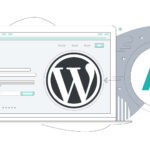With the advent of WordPress 5.8, a significant transformation swept through the platform, introducing a novel approach to managing widgets – the block-based system. While this innovation brought forth numerous advantages, a sizable contingent of users found themselves yearning for the familiarity of the classic WordPress widgets system.
Understanding the Shift: The Evolution of Widget Systems
The genesis of this change can be traced back to the inception of the Gutenberg editor in WordPress 5.0. As WordPress gravitated towards a block-based content creation paradigm, it was only natural for the widget system to follow suit, aligning itself with the broader ethos of block-based design.
Navigating the New Terrain: Introducing Classic Widgets
Responding to the clamor of users, the WordPress team devised a solution in the form of the Classic Widgets plugin. Seamlessly integrated into the platform, this plugin swiftly reverts the widget section to its classic iteration upon activation, providing users with a comforting return to familiar grounds.
Implementing the Transition: A Step-by-Step Guide
Step 1: Installing Classic Widgets
Begin by navigating to the Plugins section within the WordPress admin panel. From there, proceed to the Add New option. Alternatively, expedite the process by accessing Classic Widgets directly from the plugin directory’s front page. Upon locating the plugin, simply click “Install Now” followed by activation.
Step 2: Verifying Functionality
Upon activation, revisit the widget section to confirm the restoration of the classic view. While Classic Widgets effectively reinstates the familiar interface, it’s essential to acknowledge its limitations, particularly concerning upcoming changes in theme editing.
Weighing the Pros and Cons: Is it Worth the Reversion?
While reverting to the classic widget system remains a viable option, it prompts contemplation regarding its long-term viability. As WordPress continues its trajectory towards block-based design, embracing the new system may serve as a proactive measure against future obsolescence.
Addressing Common Concerns: FAQ
Are There Any Drawbacks to Classic Widgets?
No, the plugin seamlessly restores the classic widget system without impeding functionality. However, compatibility issues may arise with block-based themes, rendering the plugin redundant in such instances.
Do I Need to Set Up the Widget Section From Scratch?
No, the widget area remains unchanged regardless of plugin activation or deactivation. Content within the classic editor’s block widget persists, ensuring a seamless transition.
What Happens If I Uninstall the Plugin?
Upon uninstallation, the widget section reverts to its block-based counterpart, albeit retaining existing widgets. However, plugins reliant on the classic system may necessitate reconsideration.
WordPress: A Platform of Boundless Possibilities
Whether embracing the cutting edge or seeking solace in familiarity, WordPress epitomizes versatility. With a plethora of plugins catering to diverse needs, users are empowered to navigate the platform according to their preferences.
Conclusion: Navigating the Path Forward
In the ever-evolving landscape of WordPress, the decision to embrace the classic widget system or transition to block-based design remains a matter of personal preference. As the platform continues to evolve, adaptability emerges as the cornerstone of effective utilization.








